Seminar Report:
November 2019
Ottawa, Canada
copyright © 2019 Douglas Tong, all rights reserved.
__________________________________________________
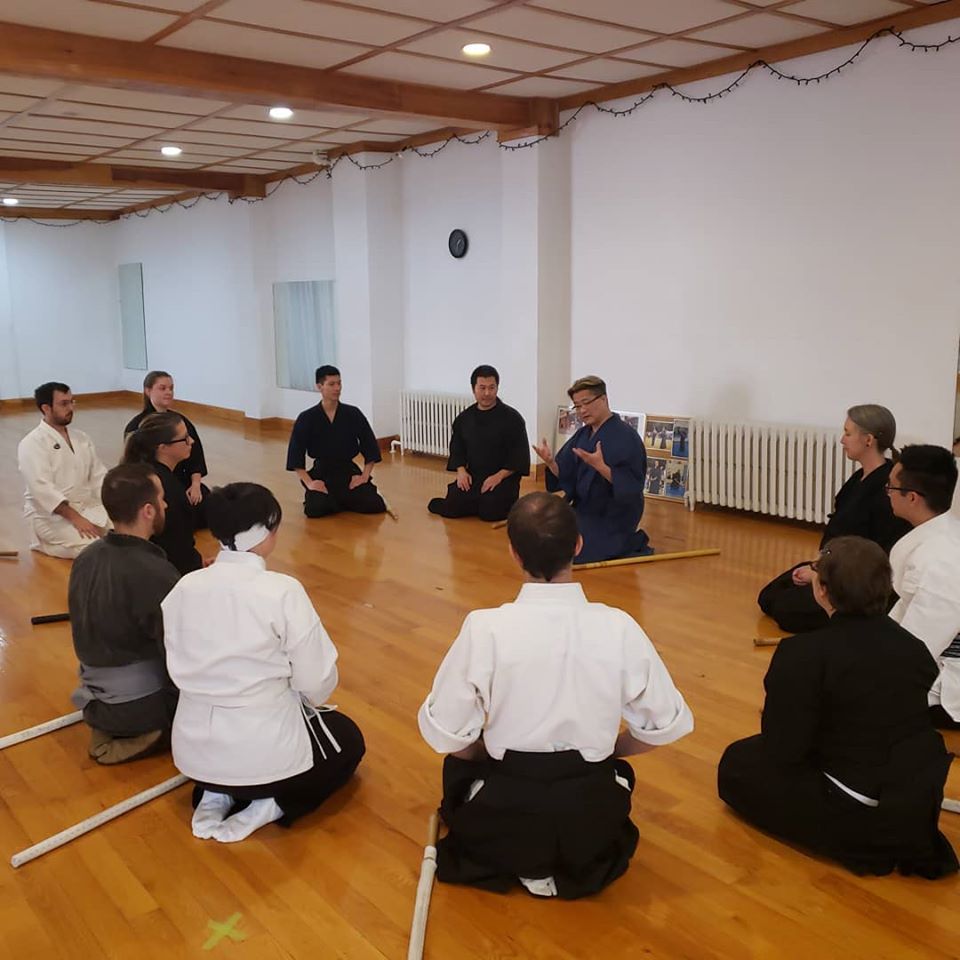
On November 23 & 24 of 2019, Tong Sensei travelled to Ottawa to run seminars in Yagyu Shinkage Ryu Hyoho for his study group Meishinkan Kenjutsu. This seminar had the distinction of being another special seminar where the members of Tokumeikan’s many Study Groups came together to train. This is what Erika, the dojo head of Meishinkan Kenjutsu, had to say about it.
__________________________________________________
New Eyes and Fresh Perspectives: A Beginner’s Seminar Review
copyright © 2019 Erika Gaal, all rights reserved.
Last weekend we had the honour of hosting Tong Sensei for another beginner’s seminar. It was carefully designed for students that recently decided to start down their path of Yagyu Shinkage Ryu, but equally beneficial to all skill levels as everyone can always use work on their basics. After all, no strong house is ever built on loose foundations.
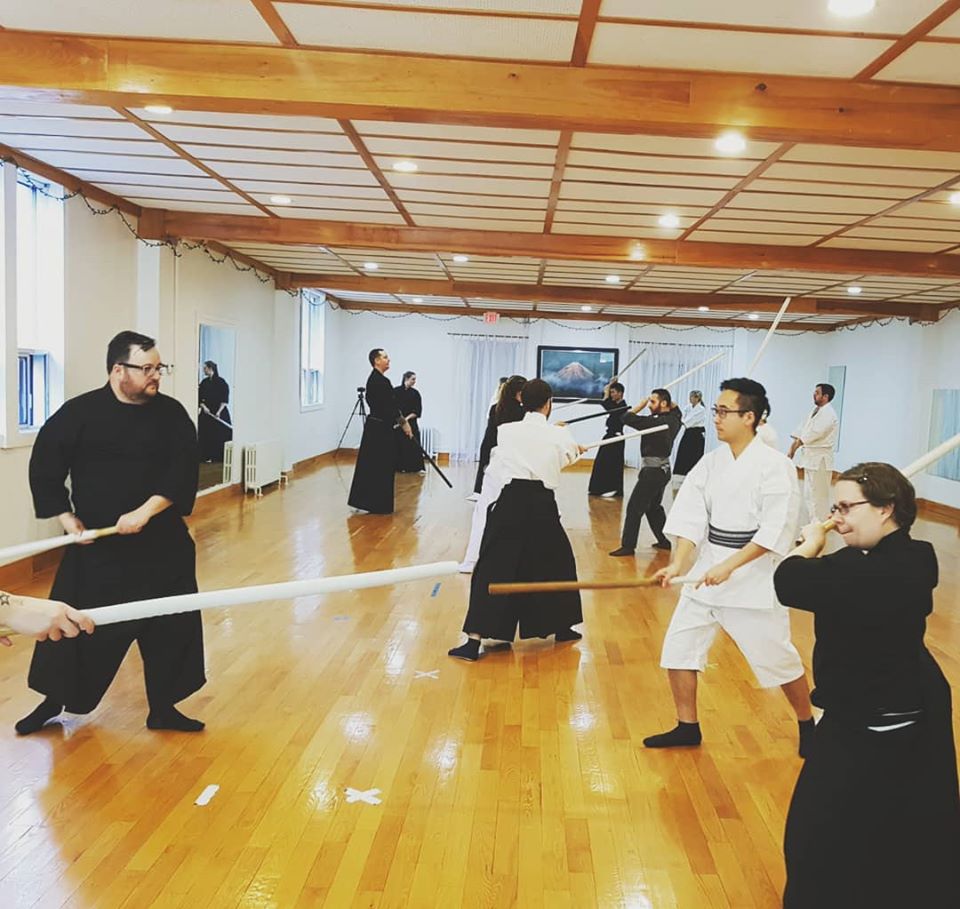
This was a particularly unique event for Meishinkan, as it brought members from various other study groups that make up the Tokumeikan family. We had the group leader from Montreal, Sensei Derek Lo and one of his students, as well as the group leader from our newest group in Niagara Falls, Sensei Dayman Perry with his head student as well. We also had visitors from Mushin Dojo in Thunder Bay and Tong Sensei’s home dojo in Orangeville. It was the perfect opportunity to strengthen the bonds within our Canadian chapter of Yagyu Shinkage Ryu, and to plant the seeds of growth for new ones.
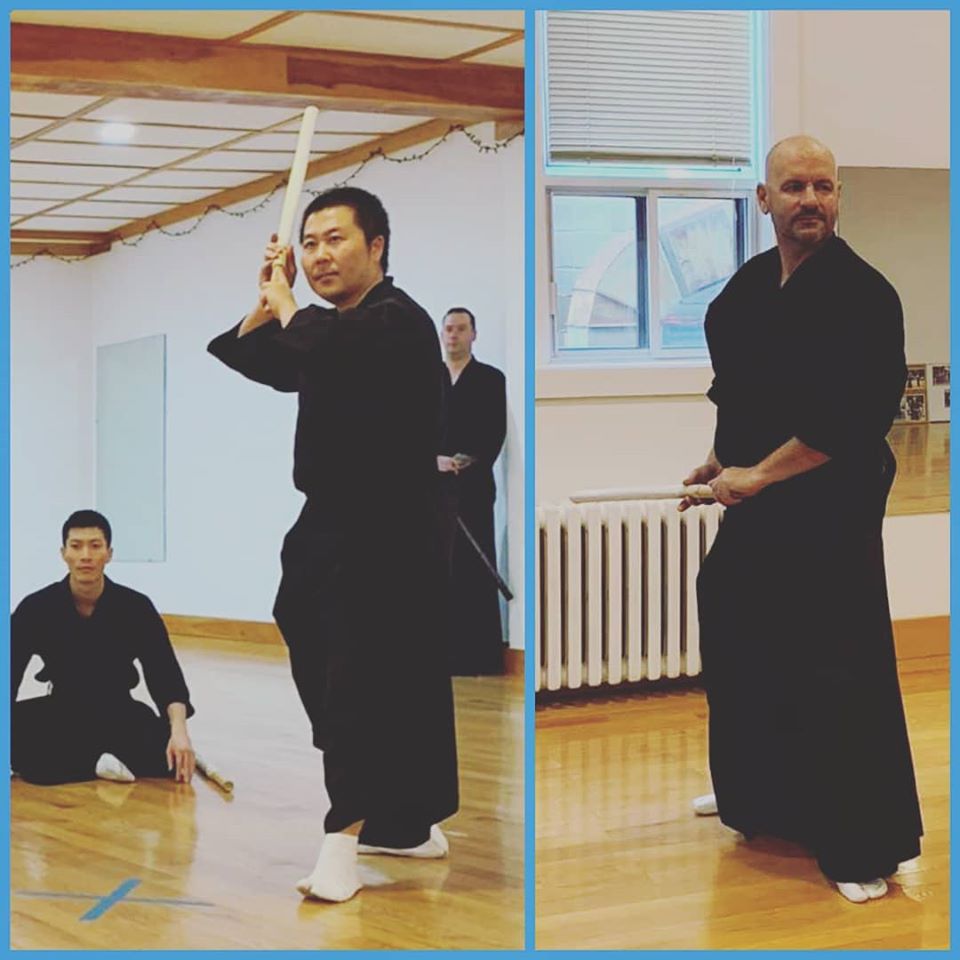
Our first day of lessons started with Sensei Lo going through our opening Reiho and teaching the ‘anatomy of a proper cut’. Many people who start their martial arts careers with this particular school may never have learned how to use a real katana. As our primary weapon is a Fukuro Shinai, it is easy to miss the subtleties that differentiate between a sword and a Shinai, but it is important to remember that the Shinai is to be used as a sword. As we practiced our cuts, we focused on the arced path the blade must follow to really cut; controlling our blade to stop it horizontally and at specific targets; and also ki-ken-tai, or the connection between our spirit, body and sword as we strive to synchronize them to work as one.
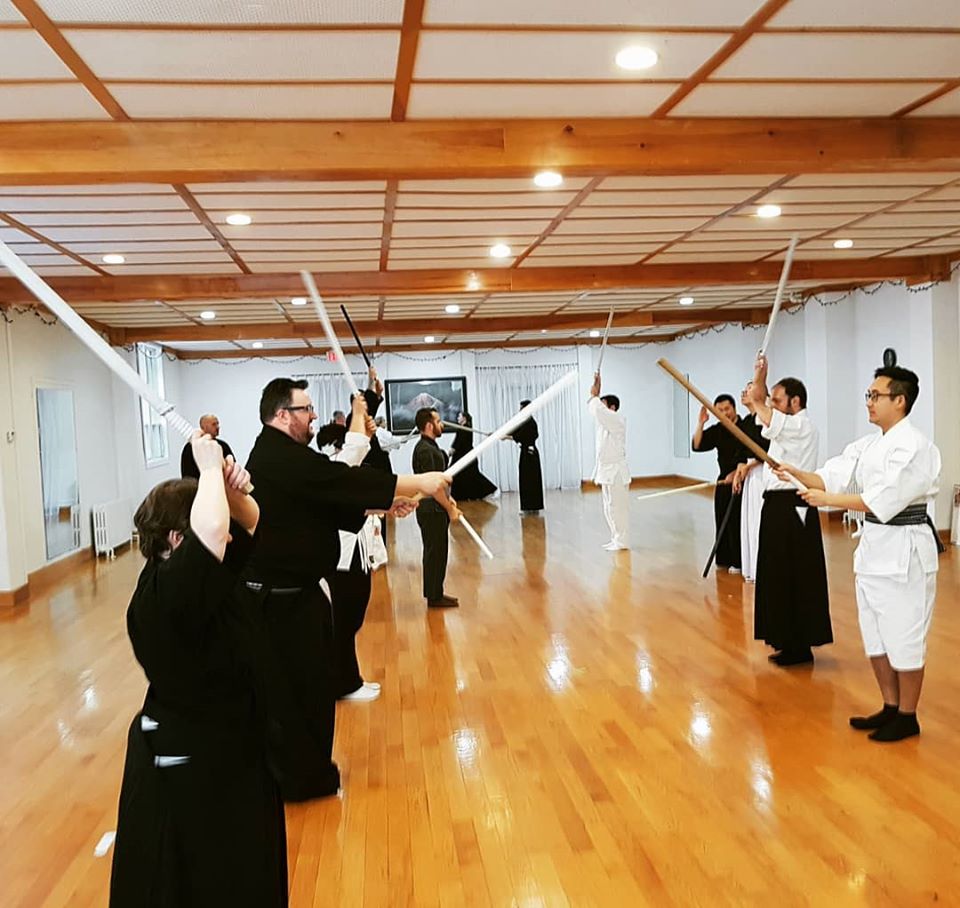
After going through regular class warm ups such as Kurai and partner drill practice, Tong Sensei started in on the seminar curriculum. This weekend was focused on our entry level of the first set of kata: Sangakuen no Tachi. Sangaku is a term that refers to the three elements that are fundamental to the development of skill. Originally referencing Kai-jo-e, a term for the three basic stages a monk must travel through as they attain enlightenment, this concept of three elements emphasizes the importance of building strong technique from the very beginning. Without good posture we cannot harness the necessary power; without proper footwork we will not be able to move fluidly and quickly; and without understanding the mechanics of wielding a sword in connection to our hands and arms we will fail in using the weapon effectively and safely.
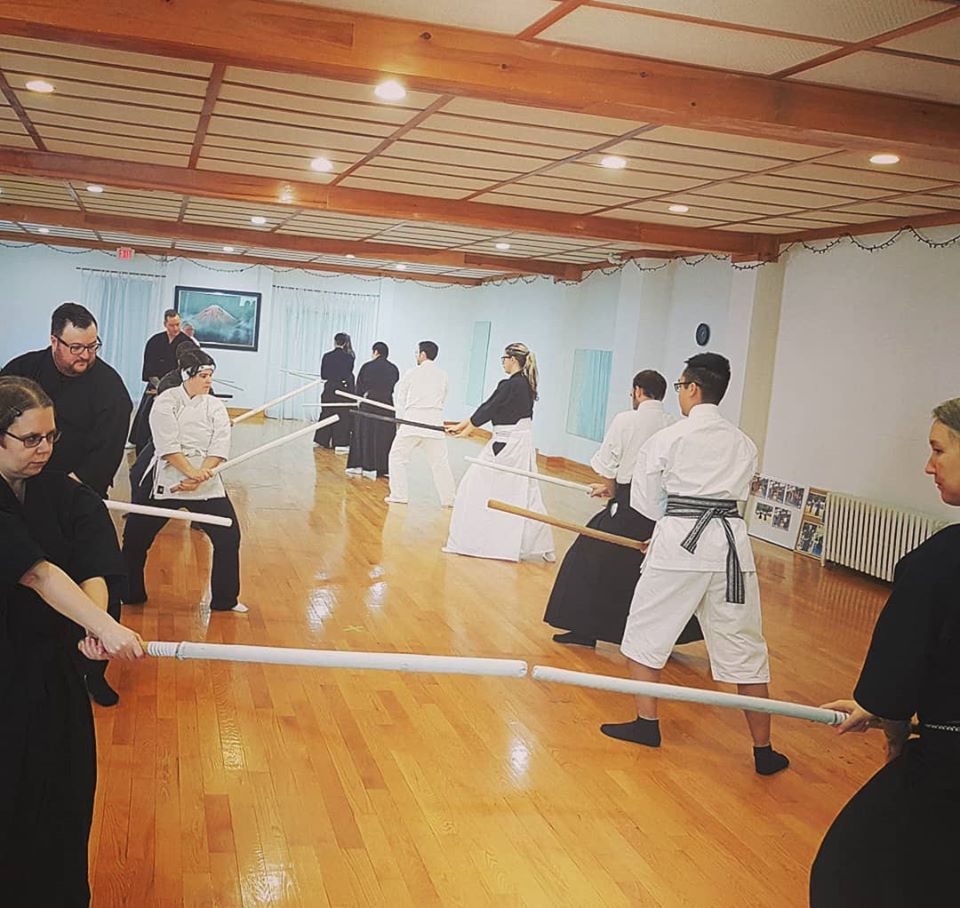
Sensei explained the reasoning behind our stances and why we held ourselves in the ways we do. Many people new to Shinkage Ryu but who have previous sword experience seemed a bit confused at first as to why we extend our arms in numerous stances, and understandably so. When learning the sword, most schools emphasize the importance of covering any openings and thereby keeping yourself safe. In ‘killing sword’ styles, this usually means keeping your hands close to your body. But what if we changed the mindset? Would this be of equal importance if we were hoping to end the altercation in a more peaceful way? Are there advantages to keeping either stance? I’m also led to consider- does our body language contribute to the escalation of aggression?
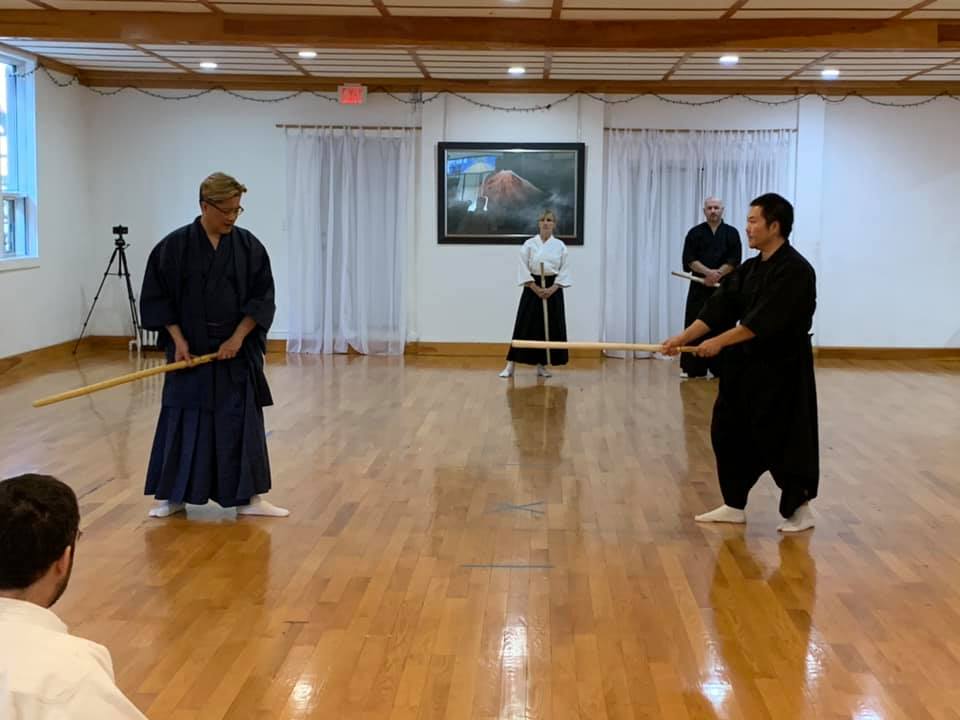
There is also the topic of leaving openings for attack. In our school, this is about strategy and not carelessness or arrogance. And if we consider this school was used by governing bodies, then we understand how strategy is such an important facet of everything we do. And as in daily life, if we can foresee the things that will lead to conflict, then we can work at stopping it before it starts.
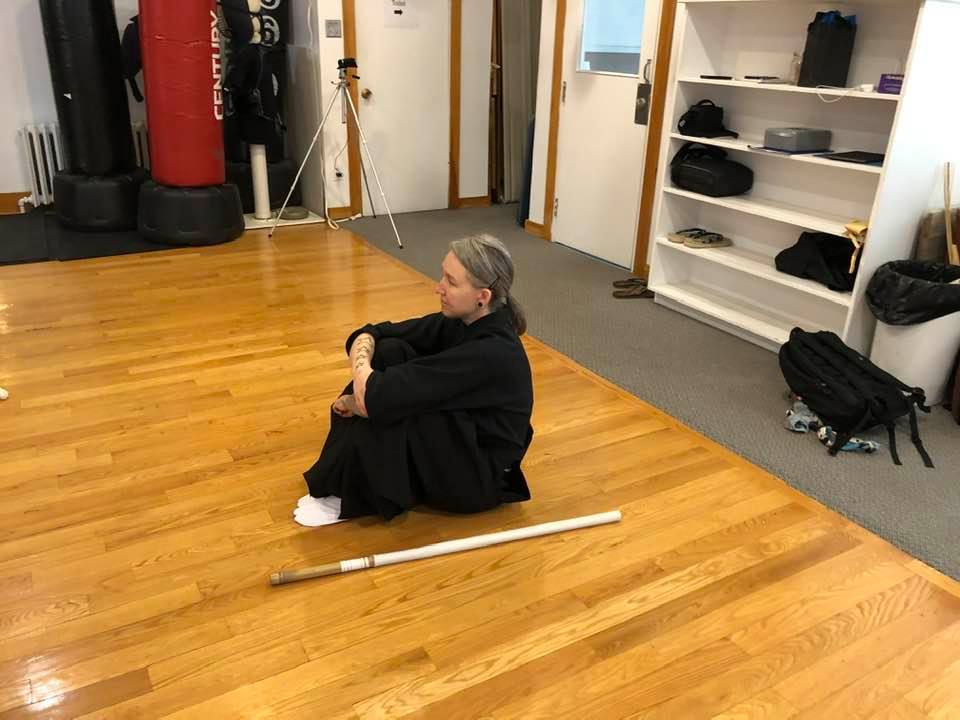
As we continued working through this entry level set, we worked on the importance of understanding distance and how the placement of our feet can dictate our level of understanding in that. For example, if we are squared up with an opponent at a one-step striking distance, the difference between stepping to the side and stepping slightly forward to the side could mean life and death.
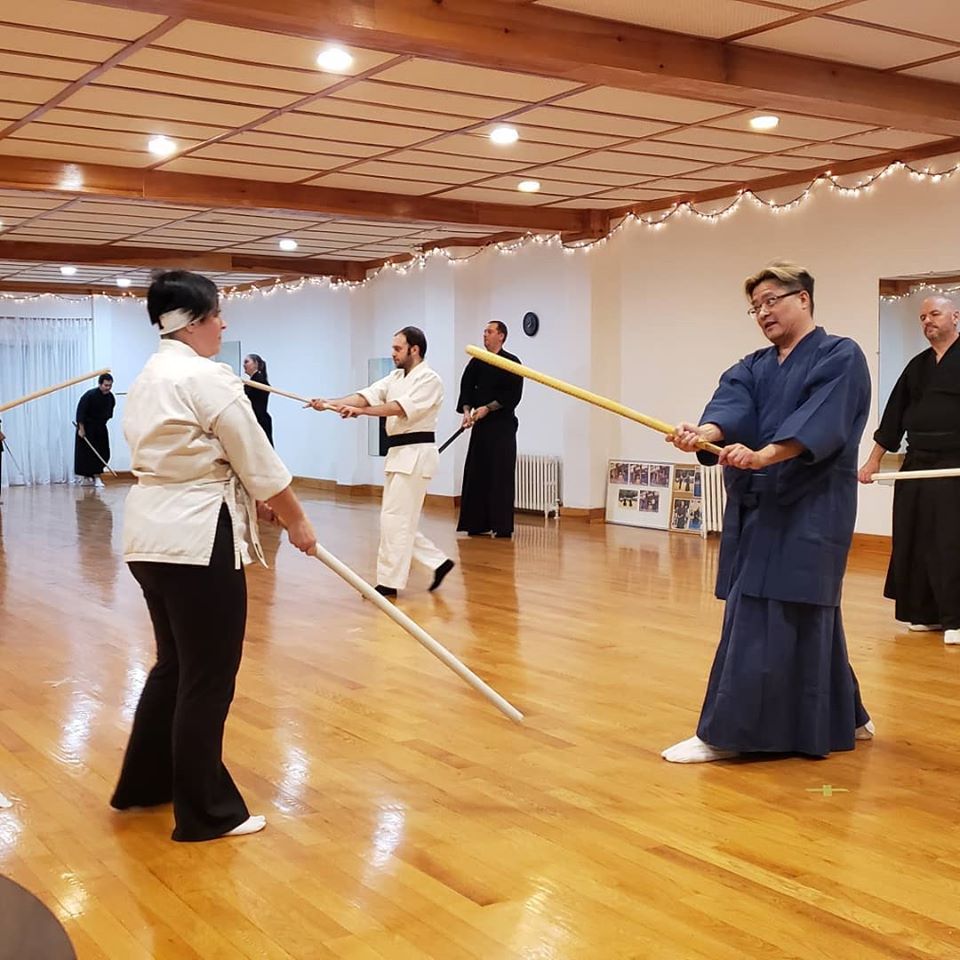
We learned to keep an attentive eye on just how close to our opponent we are at any given time, and how that needs to adapt depending on our intent. We were shown how to gain distance without making it obvious that we were doing so, and how to trap one’s attention in order to gain an advantage.
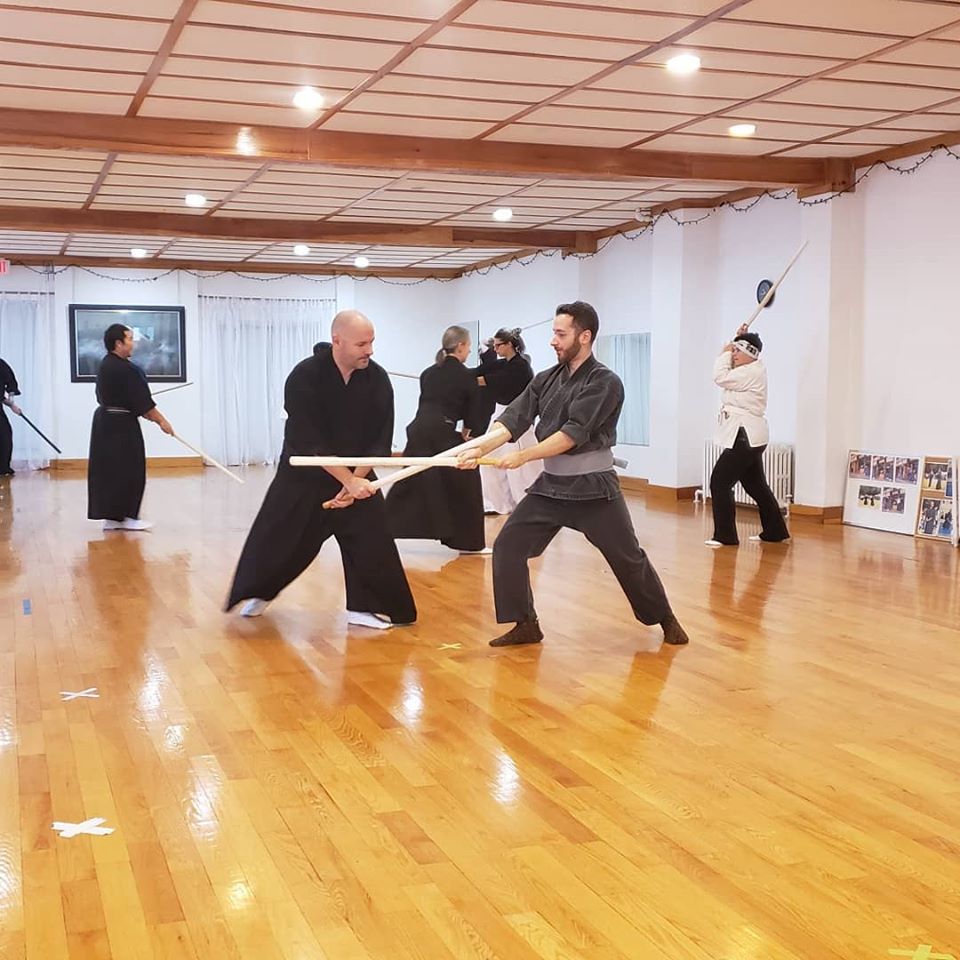
This set of kata -although basic- teaches us all the fundamentals we need to progress through this school’s curriculum. It is deceivingly difficult to master and offers continuous layers of knowledge to uncover throughout your years of study.
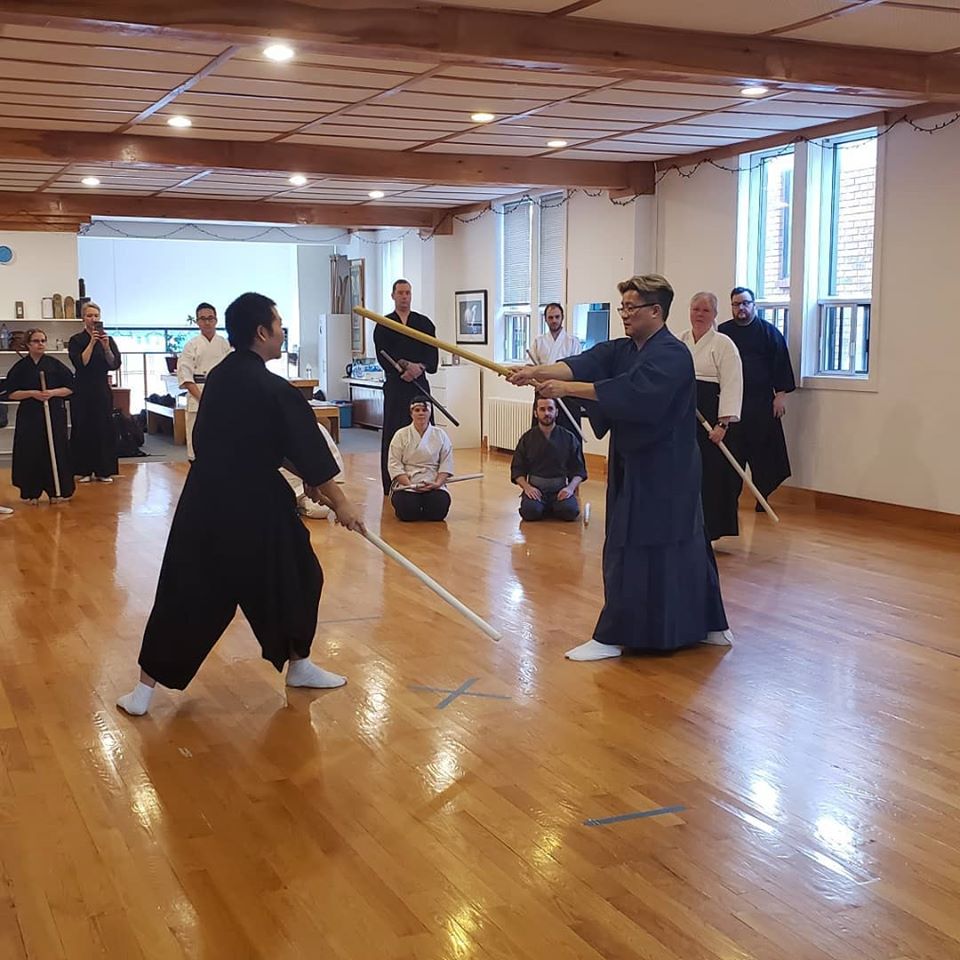
At the end of our afternoon session, the group ventured out on foot to a local restaurant for dinner. These are always opportune times to get to know your Sensei and fellow budoka better outside of the dojo, and to strengthen the bonds within your martial art family. In this instance, we had several new faces to interact with and welcome into the fold. It was a joyful and cozy atmosphere and we were all in great company.
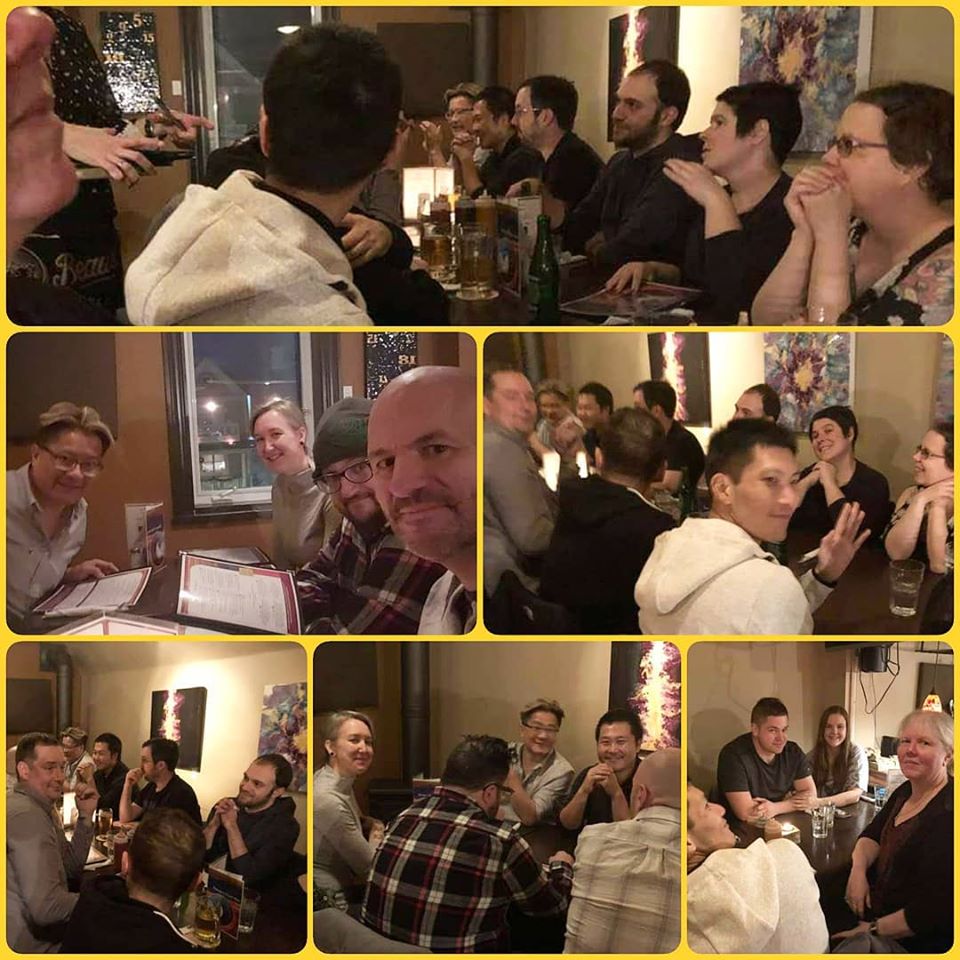
Our evening session picked up where we left off and finished up the last two kata of the set. It was here that I got to privately work with Sensei Lo and one of my students on a different style of sword kata.
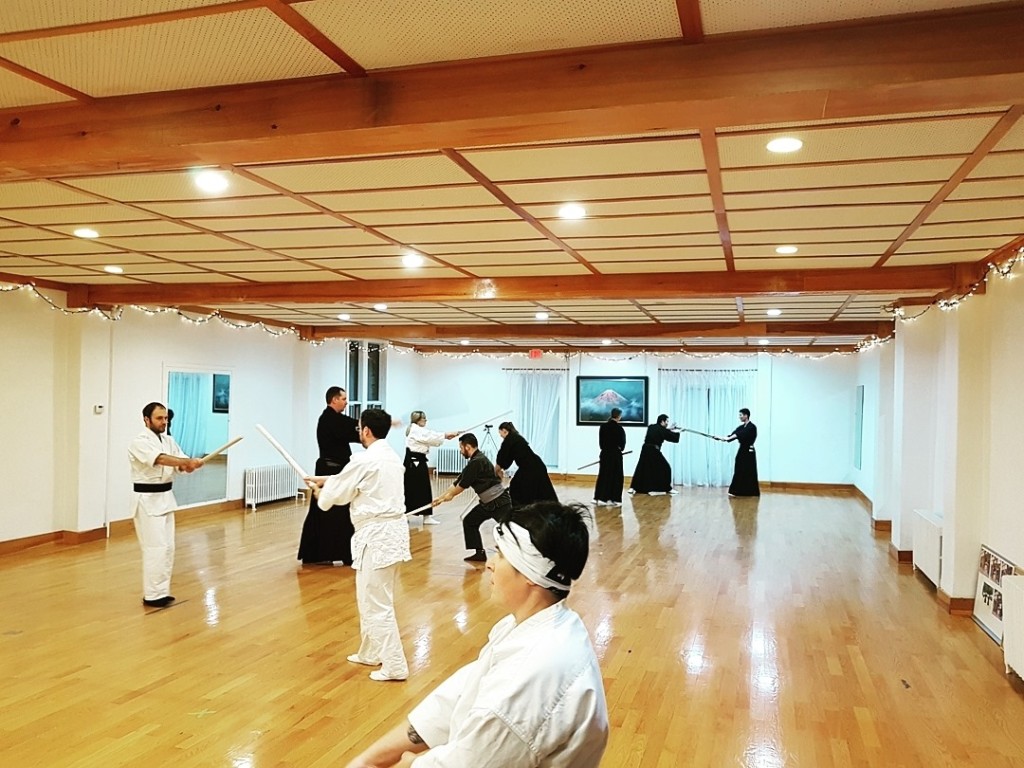
There is much relevance in understanding the roots and history of whatever it is you choose to practice. By learning this, we gain insights into the origins of techniques and the evolution of them that inevitably occurs through time. We can reach new depths of knowledge when we look behind the facade of a kata and start to dismantle the bricks that have built it.
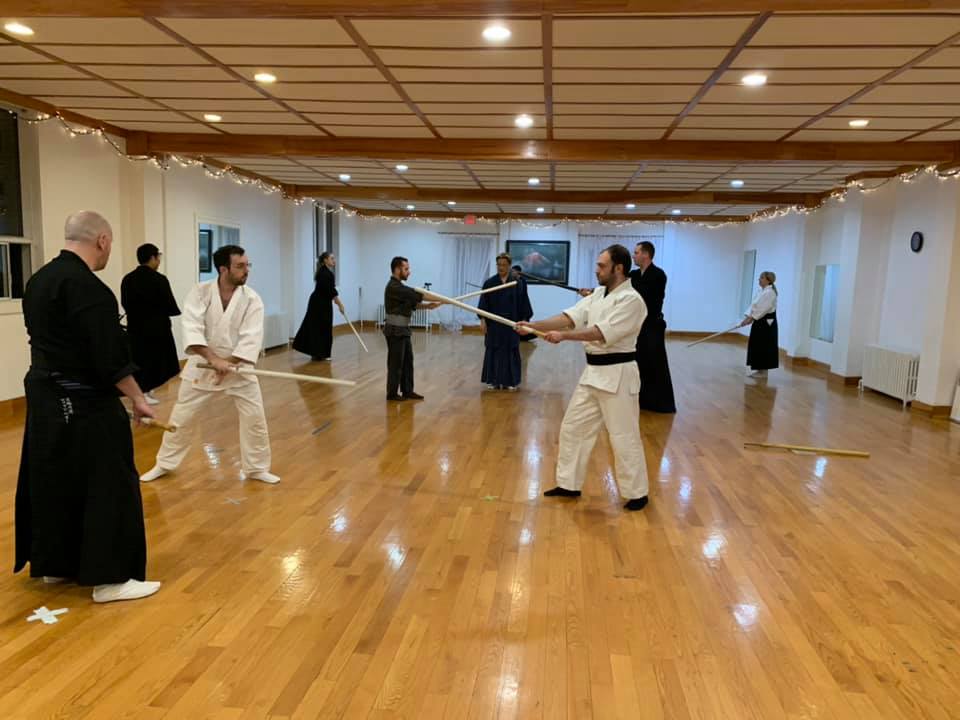
The first day ended with a sense of new found insight for some, exhaustion for others that recently began, and a hint of accomplishment for all after a long day of training. We all went home that night with many things to think about, notes to write, and new perspectives on things some of us have practiced thousands of times.
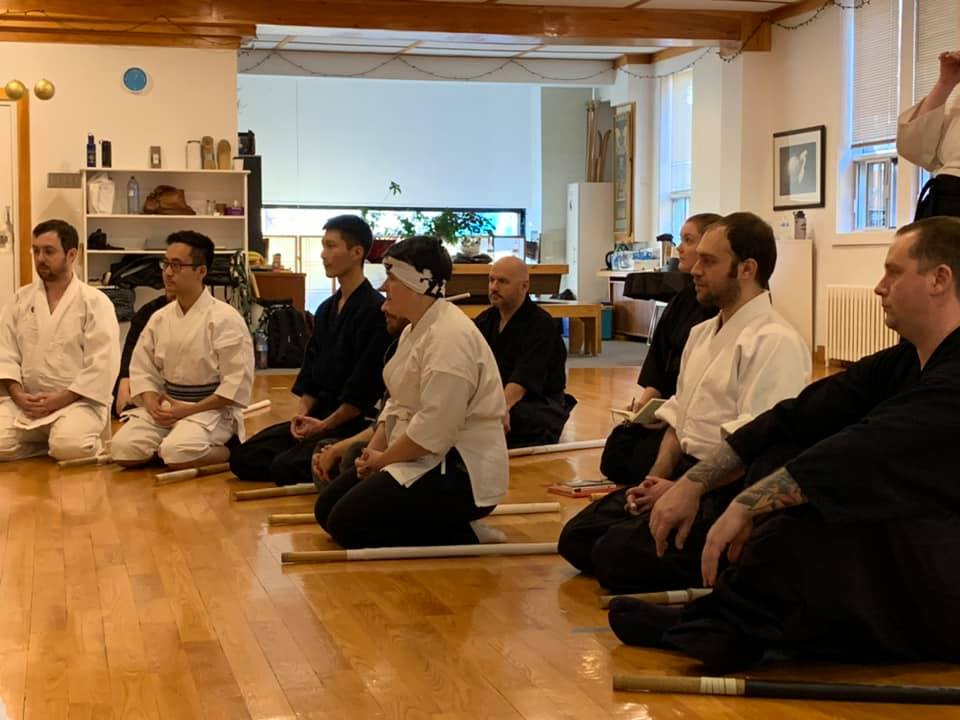
The second day started early, with both of my Sempais surprisingly meeting me at the dojo well ahead of our actual start time. I valued this quiet morning time with them as we chatted about our experiences as group leaders. When building any group, it’s important to remember the allies you have access to who are nearby. In this case, to have fellow group leaders willing to share with me and offer support has been a fundamental element in aiding the growth of my group and my confidence as their teacher. I feel very lucky to be part of the greater group I’m in and have excellent examples of what makes a great group leader.
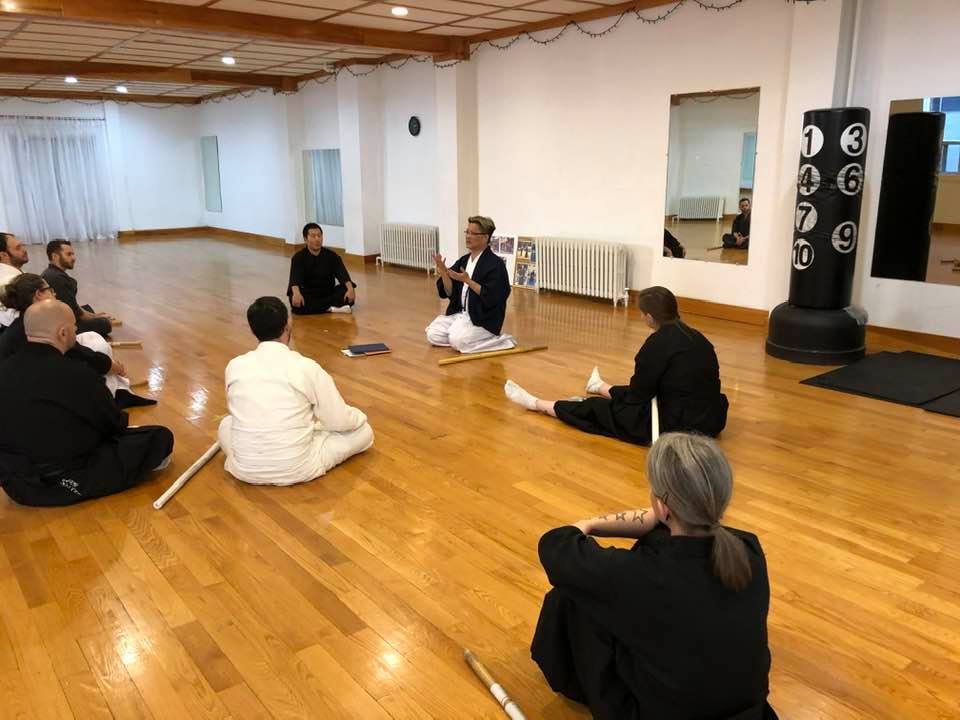
After everyone arrived that morning, we started the day with a recap of the lessons from the previous day. In order to build on some of those concepts, Sensei introduced some more advanced techniques from the next set of kata. In this set, there are two different types of technique to explore- ones that bait your opponent to act, and ones where you unsettle your opponent by rushing into them. You need very good body control and an understanding of weight distribution to effectively perform these kata, as they are quite difficult. On top of trying to master your movements, this sets also challenges you in one of our most vital concepts in the school- keeping a calm mind. This may seem like a relatively easy task, but when you are putting yourself in harm’s way, keeping calm can easily get lost in the moment.
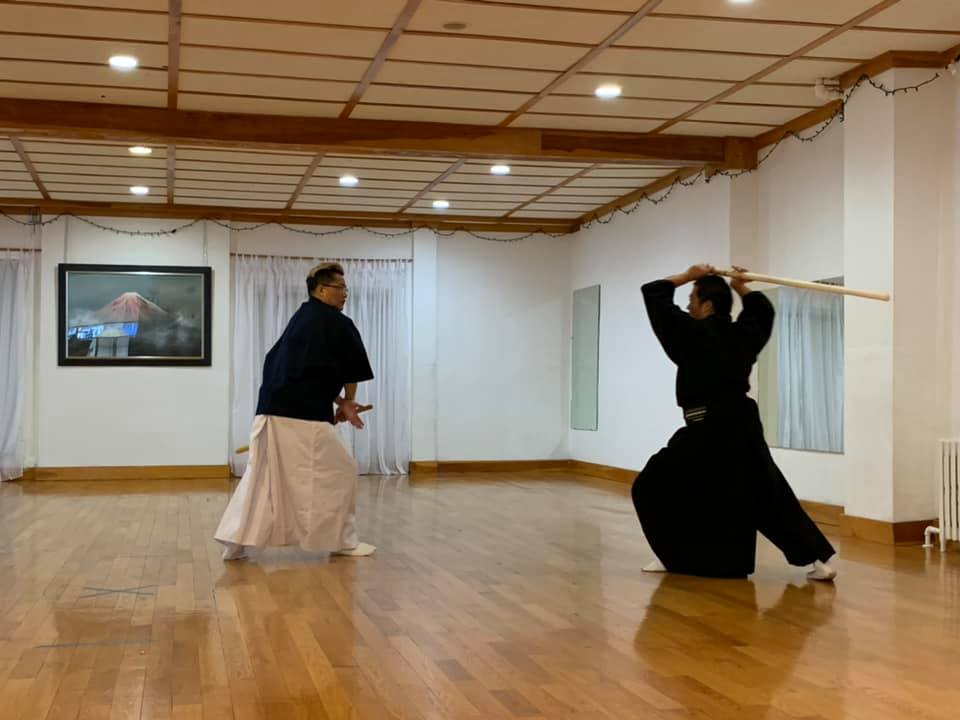
This set also exemplifies the strategy component I mentioned earlier. If you can cause an anticipated reaction, then you can take control of the situation much more easily. Given we take the ‘life-giving’ approach, being able to direct the interaction with the opponent gives us the opportunity to catch them at times where we can suppress and divert their aggressive intent. It is much easier to cause harm with a three foot blade than it is to use it in a non-lethal way or to have the courage to flow in and out of its dangerous path.
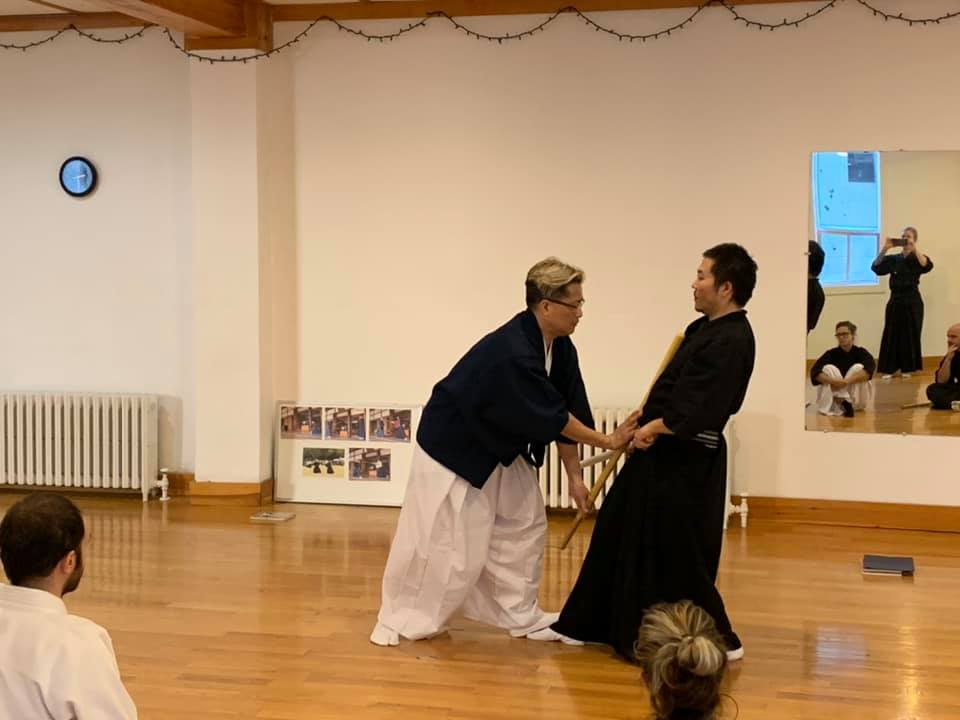
Yagyu Shinkage Ryu requires quite a high level of skill, and anyone that practices it will indeed develop that over time. To learn how to use one’s rhythm, and to understand how to cause an intended reaction can only be learned with time and dedicated practice. The integration of philosophy and mastery over your own mind adds another layer of wisdom that I have not yet encountered in other martial arts. It is an aspect that I have seen contribute to the growth of not only skill within the dojo, but also interpersonal and internal management outside of the dojo.
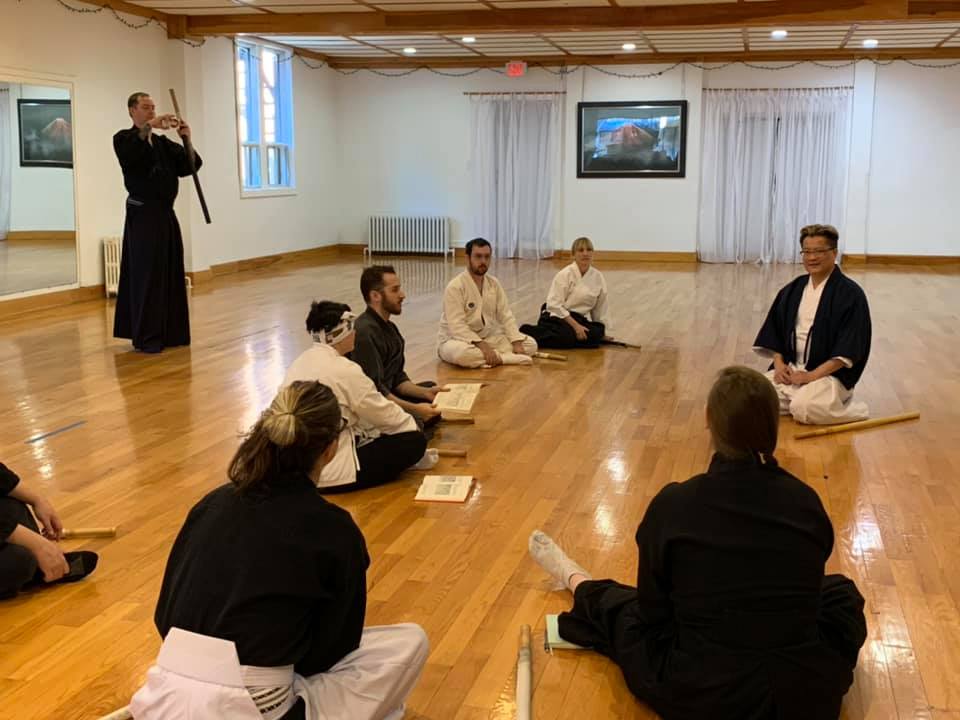
The more I practice this art, the less I feel I know, and it continues to open new avenues of thought I couldn’t previously have conceived of. There is a wealth of knowledge preserved within these kata and it is quite a privilege to be able to study them.
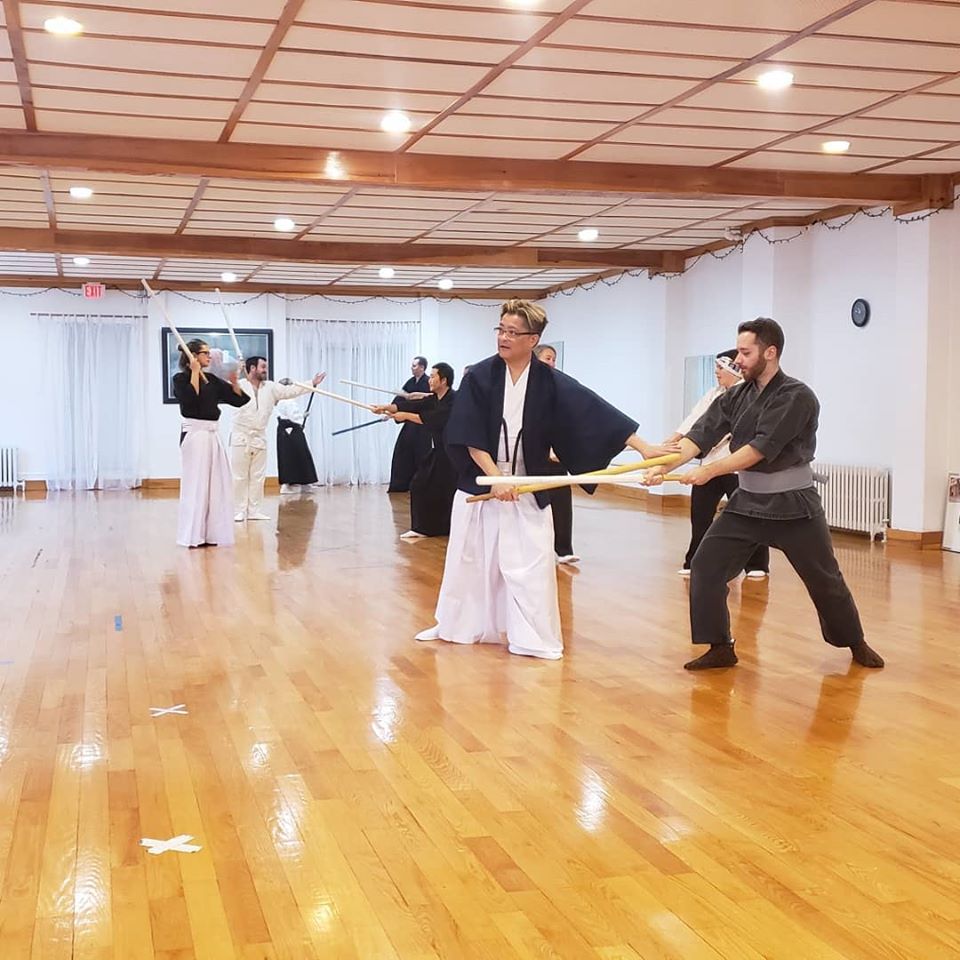
I cannot thank Tong Sensei enough for his dedication to this school of swordsmanship and to his study groups. His passion towards sharing his understanding and passing down centuries of teachings is truly an inspiration, and I’m always left with fresh motivation to keep striving to improve and to polish my skill. I also would not be at the level I am today without the help of my Sempais, and am grateful for the help that Sensei Lo and Sensei Perry offered me throughout the weekend.
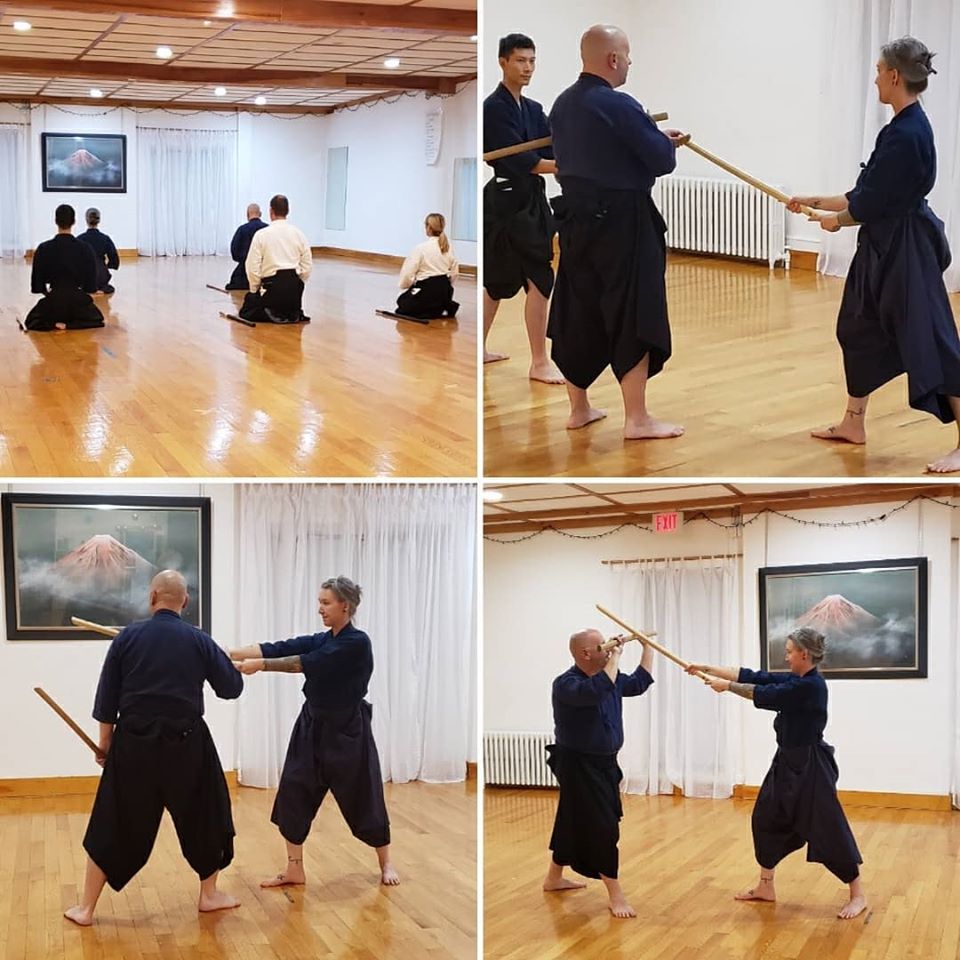
In practicing anything that you intend to improve on, it is beneficial to keep ‘Shoshin’ (beginner’s mind). If we can do this, then we enter every practice anew and eager to start all over again with fresh eyes and an open attitude. It is when we assume that we know something, that our learning stops along with our personal growth.
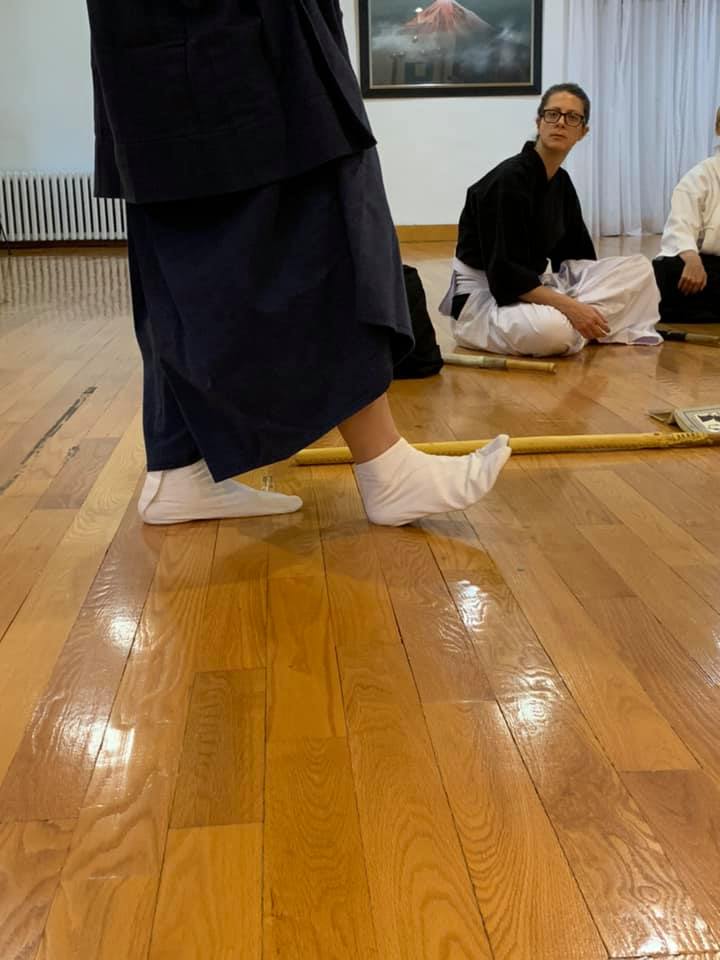
So although this was a beginner’s seminar, no matter how long some of us had been practicing, we were all beginners climbing that mountain together.
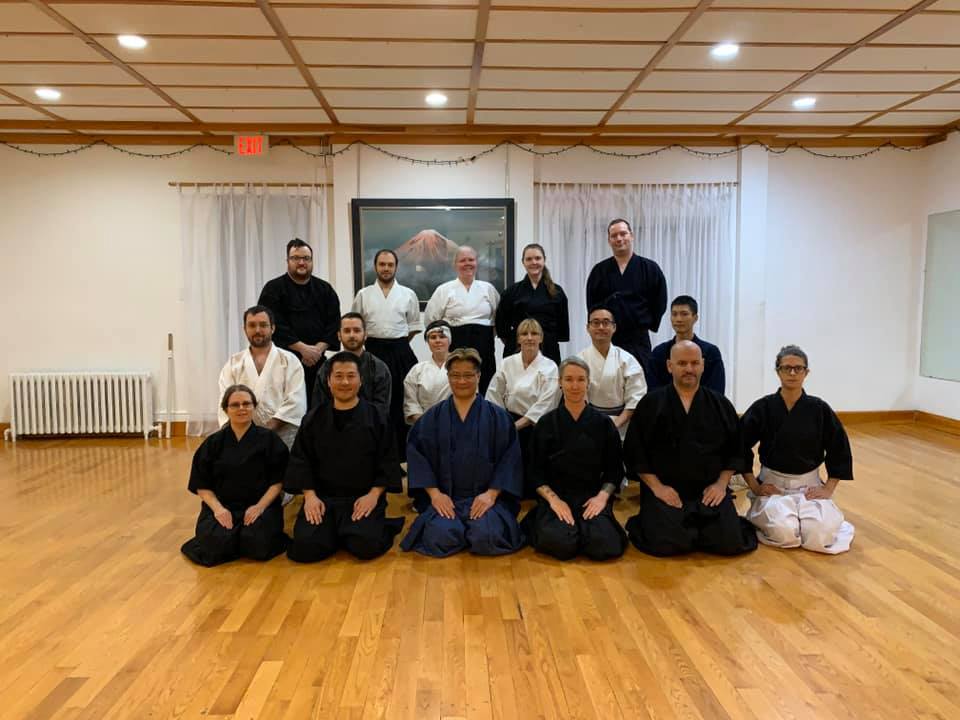
__________________________________________________
Tong Sensei’s Commentary:
This seminar focused on Sangakuen-no-Tachi, Toriage Zukai (Ue Kara). It is the first set of kata and techniques that the beginner learns in studying this style. Some may scoff and write off this version, this initial set, as simplistic and boring but it is anything but that. While many are attracted to the next level, called ‘Shita Kara Zukai’, which flows smoothly and is quick and more realistic in its timing, speed, and combat-orientation, we should not overlook the importance of the first set ‘Toriage Zukai’.
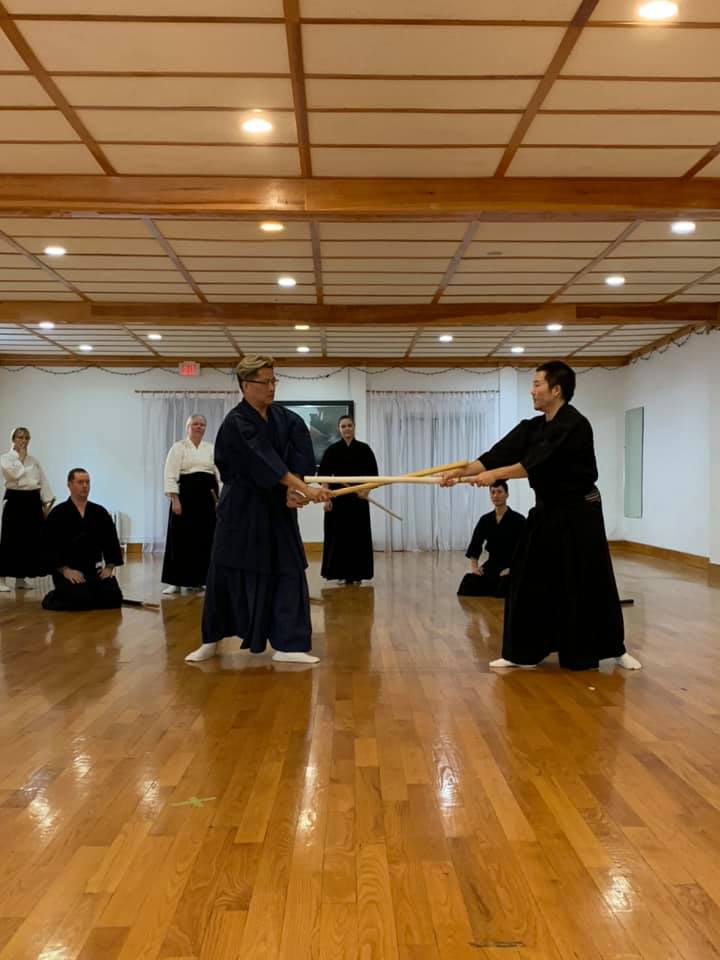
Toriage Zukai sets the tone and lays the foundation of everything that follows. Whoever created it was a genius. It breaks down all the advanced movement in the Shita Kara Zukai into its component pieces. It deconstructs the natural, fluid movement into a more manageable approach to make learning the fundamental movement skills of this style easier for the neophyte.
If your Toriage Zukai is bad, your Shita Kara Zukai will be bad. The fundamentals in the first set must be mastered and there is no shortcut around that very basic fact. Like any Japanese martial art, if your fundamentals are bad, everything that follows will be bad.
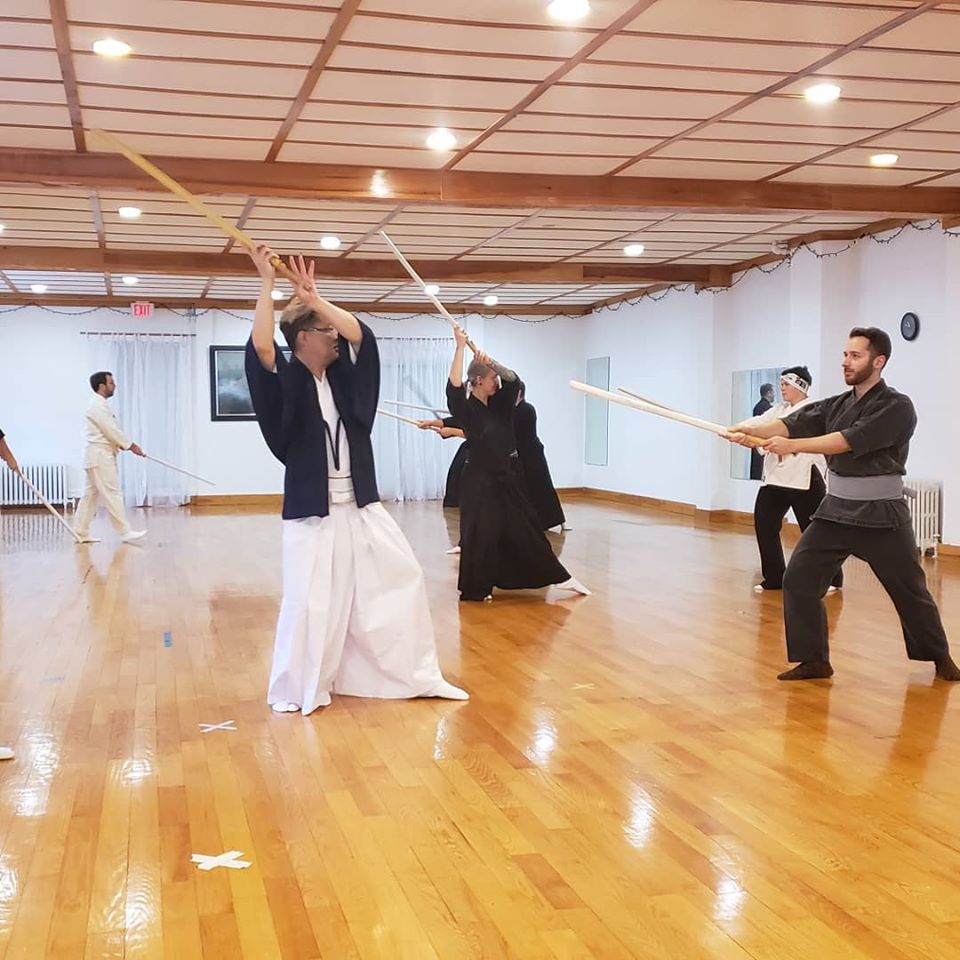
It brings to my mind the story of my first sword master, the famous Yoshio Sugino Sensei. He taught me the fundamentals of Katori Shinto Ryu personally himself. I remember him teaching me basic kamae and basic cutting. He also taught me the first kata. He could have had any of his senior or even junior instructors teach me these basic things but no, he insisted and made it a point to teach them to me himself. And I am forever grateful to him for taking the time to instruct me personally. That is how important he felt that fundamentals were.
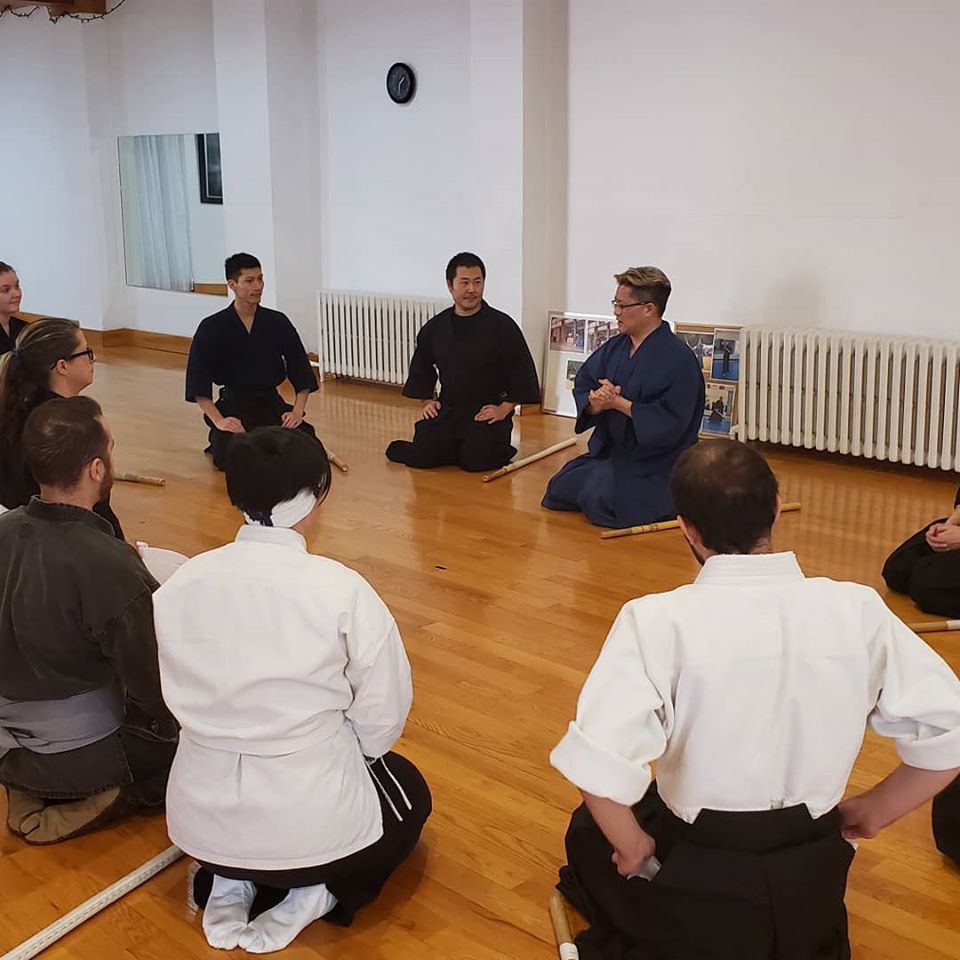
Here is an excerpt from an interview with Sugino Sensei, conducted in 1961:
Morikawa: Is that so? It’s truly a beautiful, wonderful kata. The kata of Budo are truly beautiful, aren’t they?
Yoshio Sugino: Yes, they are. In ancient jujutsu they would say “Three years of randori, three months of kata”. It may be that a beginner who knows nothing will become strong after three months of randori. However, in the end that is no more than being the strongest of the beginners. Rather than that, they were saying that someone who does kata diligently for three months will be much stronger.
One can understand this if they consider the case of Go or Shogi, no matter how much a complete beginner can win at Go without studying tactics at all, a person who has researched a little bit of tactics will quickly become much stronger. That’s how strong the tactics, or kata, of our predecessors are in absolute terms.
Etiquette (礼儀作法), flowers, tea, these were all the fruits of the study of the geniuses of the past, born from kata that seek the perfection of skill.
Life is all like that. If one doesn’t study this kata, then nothing will develop. Even in baseball, tennis or golf, I think that it is the same. In the end, the secret is to concentrate on one basic kata. For that reason, those who disdain the kata of Budo, saying that they are old, that they have no meaning, are not qualified to discuss Budo. In that vein, art, sports, poetry, literature – all of these things require some qualifications to discuss them, don’t they?
Study the kata completely, and the move freely without being hindered by the kata. However, all of that is kata. This is perfection.
So what are we seeing in the first set, Toriage Zukai? We are seeing the ideal, the form, the shape (‘katachi’) of perfection.
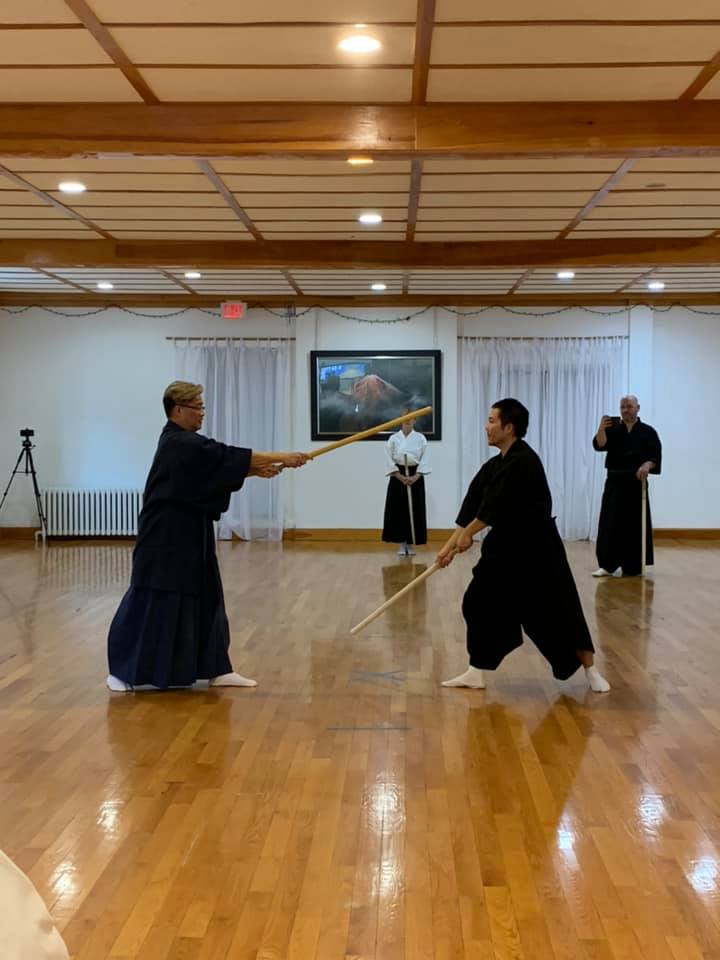
What do I mean? Perhaps an examination of Plato’s famous theory can explain it best:
The ancient Greek philosopher Plato (420s-340s BCE) did a lot to change the way we think about the world, in everything from mathematics to ethics to logic. But perhaps one of his most influential contributions to philosophy was the Theory of Forms. In basic terms, Plato’s Theory of Forms asserts that the physical world is not really the ‘real’ world; instead, ultimate reality exists beyond our physical world. Plato discusses this theory in a few different dialogues, including the most famous one, called ‘The Republic.’ It is also likely that Plato inherited some of this theory from his mentor, Socrates.
Plato’s philosophy asserts that there are two realms: the physical realm and the spiritual realm. The physical realm is the material stuff we see and interact with on a daily basis; this physical realm is changing and imperfect, as we know all too well. The spiritual realm, however, exists beyond the physical realm. Plato calls this spiritual realm the Realm of Forms (also called the Realm of Ideas or Realm of Ideals). Plato’s Theory of Forms asserts that the physical realm is only a shadow, or image, of the true reality of the Realm of Forms.
So what are these Forms, according to Plato? The Forms are abstract, perfect, unchanging concepts or ideals that transcend time and space; they exist in the Realm of Forms. Even though the Forms are abstract, that doesn’t mean they are not real. In fact, the Forms are more ‘real’ than any individual physical objects. So, concepts like Redness, Roundness, Beauty, Justice, or Goodness are Forms (and thus they are commonly capitalized). Individual objects like a red book, a round ball, a beautiful girl, a just action, or a good person reside in the physical realm and are simply different examples of the Forms.
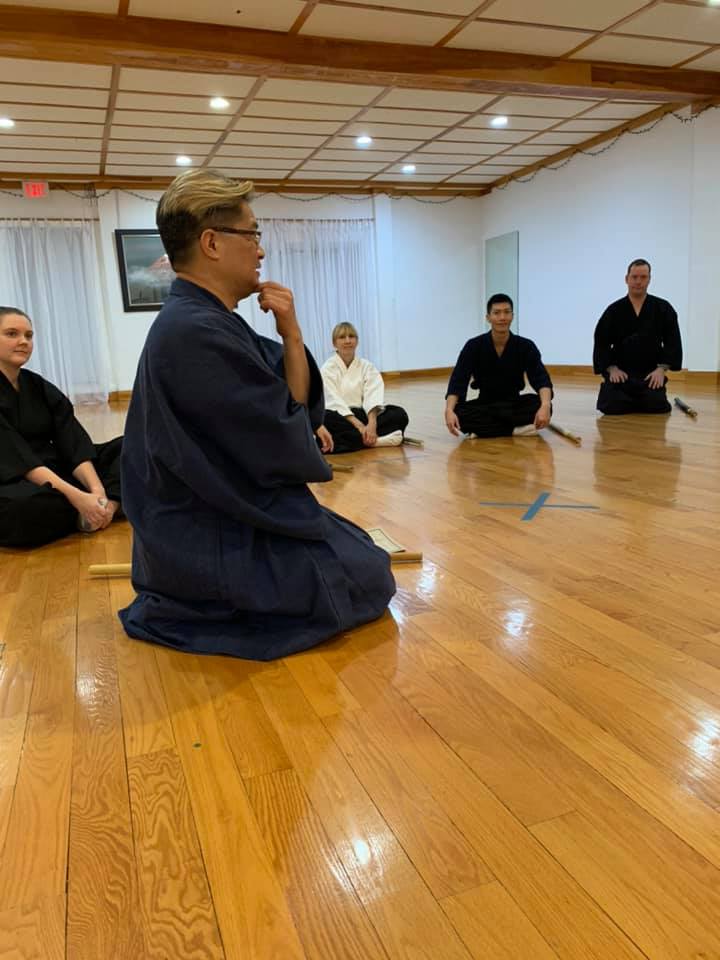
__________________________________________________
Here is an example.
Crisp, clean, precise, pristine.
Form is everything.
Toriage Zukai: the shape of perfection.
